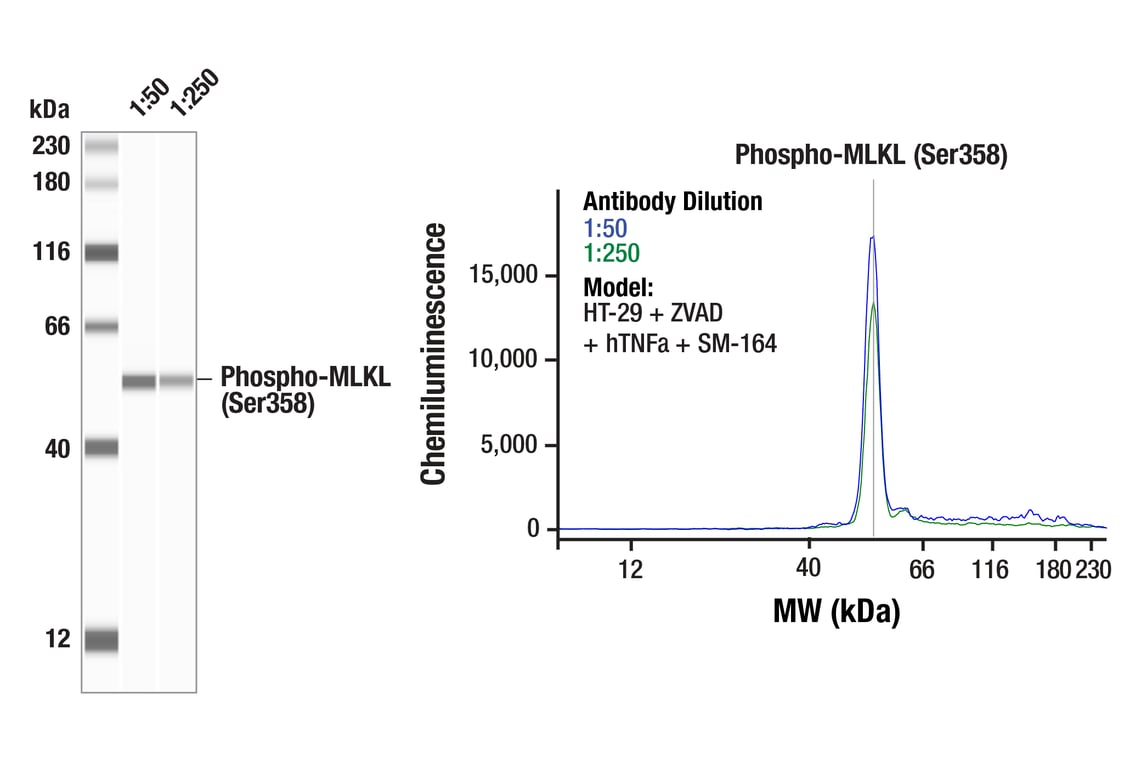 全部商品分类
全部商品分类



Monoclonal antibody is produced by immunizing animals with a synthetic phosphopeptide corresponding to residues surrounding Ser358 of human MLKL protein.


Product Usage Information
| Application | Dilution |
|---|---|
| Western Blotting | 1:1000 |
| Simple Western™ | 1:50 - 1:250 |





Specificity/Sensitivity
Species Reactivity:
Human




Supplied in 10 mM sodium HEPES (pH 7.5), 150 mM NaCl, 100 µg/ml BSA, 50% glycerol and less than 0.02% sodium azide. Store at –20°C. Do not aliquot the antibody.


参考图片
Simple WesternTM analysis of lysates (1.0 mg/mL) from HT-29 + ZVAD + hTNFa + SM-164 cells using Phospho-MLKL (Ser358) (D6H3V) Rabbit mAb #91689. The virtual lane view (left) shows the target band (as indicated) at 1:50 and 1:250 dilutions of primary antibody. The corresponding electropherogram view (right) plots chemiluminescence by molecular weight along the capillary at 1:50 (blue line) and 1:250 (green line) dilutions of primary antibody. This experiment was performed under reducing conditions on the JessTM Simple Western instrument from ProteinSimple, a BioTechne brand, using the 12-230 kDa separation module.
Western blot analysis of HT-29 cells, untreated (-), or treated with combinations of the following treatments as indicated: Z-VAD (20 μM, added 30 min prior to other compounds; +), human TNF-α (hTNF-α, 20 ng/ml, 7 hr; +), SM-164 (100 nM, 7 hr; +), and necrostatin-1 (Nec-1, 50 μM, 7 hr; +), using Phospho-MLKL (Ser358) (D6H3V) Rabbit mAb (upper), or MLKL (D2I6N) Rabbit mAb #14993 (lower).






 用小程序,查商品更便捷
用小程序,查商品更便捷




